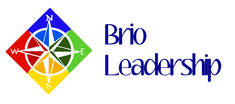 When someone talks about being mindful, do you envision sitting cross-legged on a cushion chanting “Om”? And your first reaction is, “There’s no way I’m doing that!” Many of my coaching clients have this reaction when I first introduce them to mindfulness practices, such as deep breathing or scanning the body for tension. During our coaching sessions, I introduce clients to several breathing exercises and encourage them to practice often in two-minute pauses during the day. That way, you don’t have to sit on a cushion for 20 minutes every morning (although that can help), but you incorporate mindfulness mini-sessions into your daily routine. Mindfulness practices are particularly helpful to leaders. Leaders have heavy responsibilities and are often stressed with too much to do in too little time. And, because all eyes are on the leader to set the example for the group, it is important that the leader takes a measured response to challenges and obstacles. Mindfulness has been shown to create these benefits:
What leader doesn’t need all of these things? Here are four practices to gently add to your daily rhythm that will build your mindfulness capacity:  1. Breathe! When we are stressed, we tend to pant, or breath from the top of our lungs only. This fails to fully oxygenate our brains and bodies, and contributes to feelings of stress and anxiety. Learn to practice deep breathing: Sit up straight in your chair with your feet flat on the ground and your hands laid loosely in your lap. Lengthen your spine so you are sitting as tall as possible. Relax your stomach. Remember the phrase, “Strong back, soft belly,” which is a metaphor for effective leadership: The best leaders, according to Jim Collins in his classic book, Good to Great, are those who practice humility AND strong will, a bit of a paradox. Your straight back represents strong will and the soft belly represents humility, so as you breathe you embody the characteristics of a great leader. Inhaling through the nose and out through the mouth, breathe from your belly. Check to make sure you are breathing from your diaphragm by placing a hand over your stomach as you breathe deeply. If your hand isn’t moving, you are breathing from your lungs only. Keeping your focus on the breath, count to three on the inhalation and to five on the exhalation. When you exhale longer than you inhale, you send a message to the brain that you are safe. This calms both the brain and the entire body. Do three breaths this way. Then, hold your breath for two or three counts at both the top (the end of the inhale) and the bottom (the end of the exhale) of the breath. Do three breaths. This exercise relaxes and energizes you. Try to do it several times a day. And, since you can do it discretely, you can do an abbreviated version whenever you are stressed or triggered, even in a meeting. 2. Scan your body for tension This exercise helps identify any areas of tension or stress in your body and release it: After doing the breathing exercise, above, continue to breath normally. Direct your attention to your head and notice any tension or tightness in your jaw, forehead or face. Then, relax what is tense. Work your way down your entire body by directing your attention sequentially to your neck, arms, torso, upper legs, lower legs and feet. Notice any tension, tingling or stress in each area and relax those muscles. Take two more deep breaths as above to finish your exercise. A variation on this exercise is to tense your muscles as you scan the various parts of your body and inhale, then release the tension with an exhale. This exercise is good to do in the middle of your day or as needed to relieve tension and stress. 3. Set intentions Great leaders plan how they want to affect the people they interact with. To do this, take a few minutes every morning to review your schedule for the day. Think about how you want to show up for each event on your calendar. More precisely, decide what characteristics you wish to embody in each situation. Reflect on the people that you’ll interact with and what you want them to gain from your encounter. Decide, at a high level, what you’d like the result of the event to be. For example, do you want participants in your staff meeting to leave feeling inspired, excited, concerned or eager to get to work? Consider how you might communicate so as to generate the desired outcome. If you can’t do this planning in the morning, at least set your intentions during the day as you transition to a new activity. Ask yourself, How do I want to show up at this meeting? Or, What characteristics should I demonstrate, or results should I aspire to? Even last-minute intentions can be powerful in helping you to lead more mindfully. 4. Schedule time to reflect and plan Many of the leaders that I coach haven’t developed a discipline of protecting time to think strategically. This practice is essential for managers who wish to make the transition from individual contributor to leader and to develop their strategic thinking capabilities. Time to think is a rare commodity in the world of work. But wise leaders schedule multiple blocks of time each week to look into the future, try to anticipate what may arise, and make plans. Here are some aids in scheduling time to reflect and plan:
The best leaders live life intentionally, recognizing that you go slow to go fast. What you’ll find once you incorporate these suggestions into your daily life is that you are more productive, can better focus on the task at hand and are living life with more intention and presence. Now that is a successful life!
0 Comments
Leave a Reply. |
From the desk of
|
Our services |
Our Company |

 RSS Feed
RSS Feed

